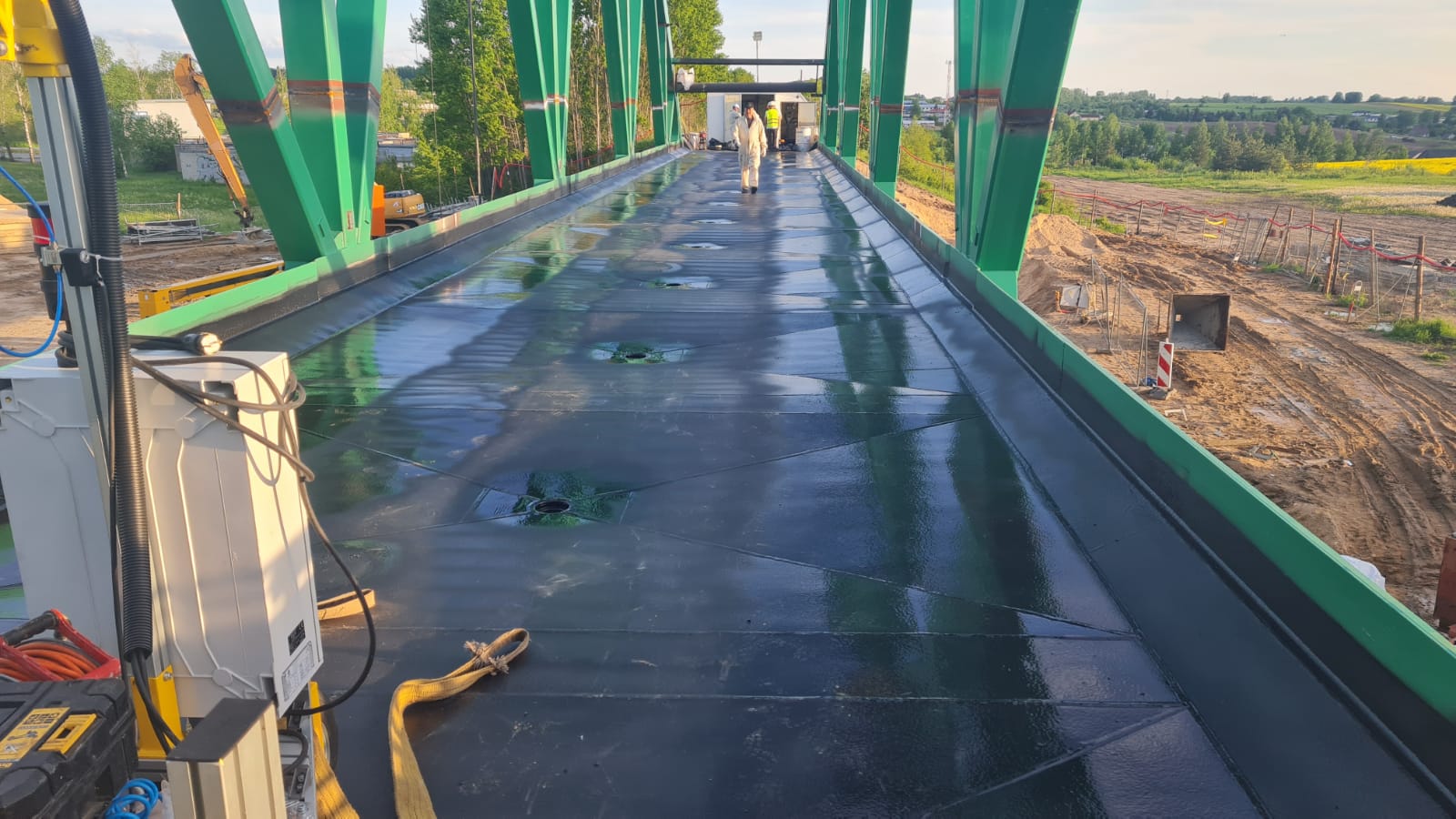
Waterproofing of a steel railway bridge with polyurea
The work was carried out with the aim of providing a durable and long-lasting layer of waterproofing directly under the ballast layer of a steel structure railway bridge. Polyurea was chosen as the waterproofing solution, which is suitable for use in harsh conditions due to its excellent mechanical and chemical resistance. The works were carried out on a 300 m² bridge surface.
Work process:
Surface preparation and priming:
The metal surfaces of the bridge were cleaned and primed with a special primer applied by spray application. The primer was applied with a sprayed primer. The primer provided the necessary adhesion to the polycarbamide layer.
The polyurea was coated with a primer to provide the necessary primer:
In less than 12 hours after the start of the works, all the priming and polyurea installation was completed. The coating was applied using a robotic spraying machine, achieving a uniform thickness of 5 mm over the entire 300 m² area. The polycarbamide solidifies within seconds and forms a strong, elastic and monolithic protective layer.
Resistance to mechanical and thermal effects:
After installation, welding work was carried out on the bridge, which exposed the polycarbamide layer to welding spatter. During the inspection, it was found that the splashes did not cause any damage to the surface. The bridge was also ballasted with heavy equipment, which did not affect the integrity and functionality of the waterproofing layer.
Polycarbamide technical data:
Tensile strength: ≥ 15 MPa
Elongation: ≥ 350%
Hardness (Shore A): 85-95
Drying time: < 10 seconds
Full cure: 24 h
Chemical resistance: Resistant to fuels, salts, oils and most solvents.
Temperature resistance: -40 °C to +120 °C
In summary, polyurea on 300 m² of bridge surface provided a fast and durable waterproofing solution that can withstand both the heat of welding and the mechanical stress of ballasting.